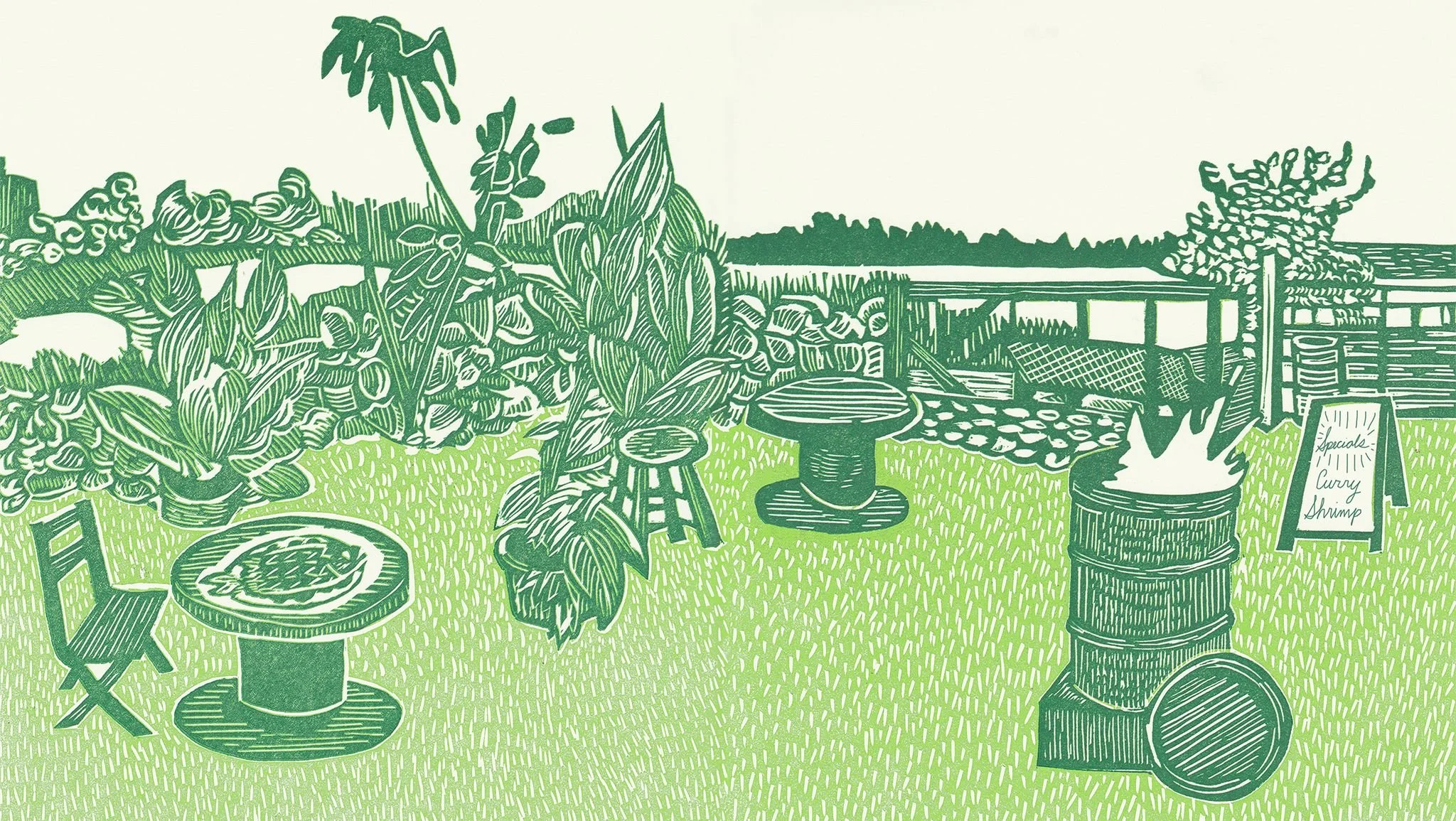Urban Omnibus commissioned Sarah Nicholls to create a linocut of C+C Jerkbox for my piece, Utopia is a Vacant Lot in Rockaway.
I was part of the inaugural fellowship class for the New City Critics, an 18-month program with the Urban Design Forum, Urban Omnibus, and the Architectural League to publish original pieces about urban planning and citymaking: I wrote about vacant lots in Rockaway, a food forest in the South Bronx, and Long Island.
Utopia is a Vacant Lot in Rockaway, my piece on vacant lots, also became my master’s thesis and entire life. I graduated with a Masters in Urban Planning at Columbia and wrote my masters thesis, Non-Resilient Resiliency: Informal Land Stewardship as Climate Counterplanning in Rockaway, or, This Could Be Ours! about informal reclamation of vacant lots in east Rockaway: how people organize around them, how they reject neoliberal resiliency planning, and how they push forward a proactive vision for climate justice. For this, I was the recipient of the Charles Abrams Thesis Award for a Commitment to Social Justice.
Abstract: the best form of flood resiliency is my mom’s favorite Jamaican restaurant in Queens. There are over 1,300 vacant lots in Rockaway: mostly created by historic and active urban renewal, entrails of unchecked luxury development, and racial capitalism, but partially created by Hurricane Sandy’s Build-it-Back and Housing Recovery Office, a municipal program funded by a Federal Emergency Management Authority Community Development Block Grant (FEMA CDBG-DR) which went towards voluntary residential buyouts for homeowners in Rockaway, South Brooklyn, and Staten Island. After the city purchased select homes and land from deep within Rockaway’s floodplain, they demolished properties and fenced up the now vacant lots with gates and threats of $20,000 fines for trespassing. The city’s vision for these lots, while unarticulated, is for them to remain dormant: receptacles for trash, overgrown weeds, parked cars, and ticks. In line with the city’s post-Sandy embrace of resiliency planning, a form of hard infrastructure planning that emphasizes addressing immediate shocks to a system instead of underlying systemic inequities, they aim to turn these vacancies into increased permeable surfaces to protect against flooding. Despite the city’s dream for a seawall, these lots are full of life whenever the city looks away: of mismatched porch furniture for watching the waves by the bay, of grills and couches, of solar power lights, of microfilament recycling tubes, of pop-up Jamaican restaurants with jerk tofu and rasta pasta, of racial justice protest signs, of DIY seawalls, and of joy. This thesis is based on two methodological strategies in pursuit of spatial justice: feminist ethnography, namely participant observation, formal and informal semi-structured interviews, vacant lot observation, and attending community meetings; and organizing, namely hosting a series of public education sessions in partnership with environmental justice community organization Rockaway Revolution and agitating towards change around vacancies in the Rockaway peninsula. I make the case that informal vacant lot programming, aside from providing material benefits to respond to Rockaway’s racial, class, and climatic inequities that are unevenly spatially distributed from east to west (like waterfront access and fresh food), challenges resiliency planning, through (1) resisting resilient gentrification through non-legal claims to property, (2) upending the status quo, and (3) building adaptive capacity and social infrastructure in times of disaster. Resiliency planning, like the urge to build a seawall overnight or replenish the sand on the beach to secure existing property, will not save us. Instead, it pushes us deeper into systems that are leading to our demise, like the reckless pursuit of luxury development, displacement, and growth at all costs. While imperfect, strategies for informal management, challenge this despair, and instead propose a future that is counter to the aims of the state, replenishing and structural, allows for deliberative planning, and uproots neoliberalism. Plus, they’re fun!



























